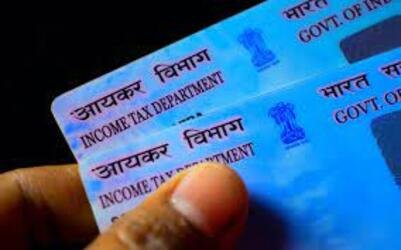NSDL PAN Card Status: Latest Updates and Tracking Methods

Introduction:
PAN Card or Permanent Account Number card is a unique identification code allocated to taxpayers and it was introduced by the Indian government in 1972. PAN card is a mandatory document for every individual, firm or company involved in financial transactions which include filing for income tax, investments in securities and properties and transactions above a certain limit.
The PAN card is issued by the Indian government through the NSDL or UTIITSL and with the help of technology, applicants can now track the status and download their e-PAN cards with just a few clicks. In this article, we will discuss the NSDL PAN card status, the latest updates and tracking methods.
1. What is a PAN Card?
A Permanent Account Number Card (PAN Card) is a unique ten-digit alphanumeric code issued by the Indian government that serves as a primary identification document for taxpayers in India. It is issued to individuals, companies, and partnerships, and it is mandatory to quote the PAN while carrying out financial transactions such as tax payments, income tax returns, and investments in securities or properties.
The PAN card is used primarily for the following purposes:
- For filing income tax returns (ITR) with the Income Tax department.
- For making investments above a certain threshold amount.
- For opening a bank account with a bank, either savings or current.
- For obtaining a credit card.
- For purchasing mutual funds, debentures, or stocks.
- For opening a demat account for share trading.
- For obtaining a loan or an insurance policy.
2. Types of PAN Cards:
There are two types of PAN Cards in India – a physical PAN Card and an e-PAN Card. The physical PAN Card is a laminated card that is sent to the applicant’s registered address through the post. On the other hand, an e-PAN Card is an electronic version of the PAN Card that is sent to the applicant’s registered email address.
The physical PAN card is issued in cases where the applicant does not have an email address or in cases where the applicant has requested for a physical PAN card. However, the e-PAN Card is much faster and easier to obtain. It can be downloaded from the NSDL or UTIITSL websites.
3. How to Apply for a PAN Card?
In order to apply for a PAN Card, the applicant needs to follow the below mentioned steps:
Step 1: Visit the NSDL PAN Card Portal.
Step 2: Click on “Apply Online” and select the category of the applicant.
Step 3: Fill in the required details such as name, address, date of birth, and email address.
Step 4: Choose the appropriate documents to support the application. These documents may include attested copies of identity proof, address proof, and date of birth proof.
Step 5: Pay the application fee of Rs 110 (for Indian citizens) or Rs 1,020 (for foreign citizens).
Step 6: Submit the application and take a printout of the acknowledgement slip.
Once the application is submitted successfully, the status of the PAN Card can be tracked through the NSDL portal.
4. Tracking NSDL PAN Card Status:
Tracking the NSDL PAN Status is quite simple. After submission of the application, an acknowledgement slip is generated. The acknowledgement slip contains a 15-digit acknowledgement number which can be used to track the status of the PAN Card application.
The NSDL Portal provides the following methods for tracking the NSDL PAN Card Status:
- SMS
- Online Portal
SMS Method:
To track the status of the PAN Card via SMS, the applicant needs to send the following message to 57575:
NSDLPAN <15 Digit Acknowledgement Number>
The applicant will receive an SMS containing the status of the PAN Card application. The applicant can also check the status of the NSDL PAN Card application through the online portal.
Online Method:
To track the status of the PAN Card via the online portal, the applicant needs to visit the NSDL website and click on ‘Track your PAN/TAN Application Status’ under the ‘Services’ tab.
The applicant will be redirected to a page where the 15-digit acknowledgement number needs to be entered. After entering the acknowledgement number, the current status of the NSDL PAN Card application will be displayed.
5. NSDL PAN Card Latest Updates:
The NSDL PAN Card has undergone many changes over the years. Following are the recent updates and changes made to the NSDL PAN Card:
1. Introduction of e-PAN Card:
The Indian Government introduced e-PAN Card in 2018, which is basically a digital version of the PAN Card. An e-PAN Card is sent to the applicant’s registered email address within a few minutes of application. It is valid and can be used for any purpose that a physical PAN Card is used for.
2. Online Application Process:
The process of applying for a PAN Card has now been simplified. The applicant can apply for a PAN Card online by visiting the NSDL or UTIITSL website. The online application process is faster and more efficient.
3. Correction Facility:
The NSDL website has introduced a correction facility for PAN Cardholders. This facility allows the PAN Cardholder to modify or change any incorrect details on their PAN Card online.
4. Quick e-KYC:
The NSDL PAN Card website has introduced a quick e-KYC facility. This facility allows PAN Card applicants to complete the entire process online by using their Aadhaar card.
5. e-PAN Card Download:
Once the PAN Card application is processed, the e-PAN Card can be downloaded directly from the NSDL or UTIITSL website. The steps to download the e-PAN Card are as follows:
Step 1: Visit the NSDL or UTIITSL website.
Step 2: Select ‘Download e-PAN Card’.
Step 3: Enter the 15-digit acknowledgement number or PAN number.
Step 4: Enter the captcha code.
Step 5: Click on the ‘Submit’ button.
Step 6: The e-PAN Card will be displayed on the screen.
Step 7: Download and save the e-PAN Card.
6. PAN Card vs e-PAN Card:
While both PAN Card and e-PAN Card have the same PAN number and validity, there are certain differences between them. These differences are as follows:
1. Delivery time:
The delivery time of the physical PAN Card is longer as it is sent through post. But an e-PAN Card is delivered within a few minutes of application.
2. Cost:
An e-PAN Card is cheaper compared to a physical PAN Card.
3. Convenience:
An e-PAN Card is more convenient as it can be downloaded online, while a physical PAN Card needs to be carried around.
4. Acceptance:
An e-PAN Card is widely accepted and recognized by most financial institutions and government agencies.
Conclusion:
The NSDL PAN Card is an important identification document for every taxpayer in India. With the introduction of e-PAN Cards and online tracking, the process of obtaining a PAN Card has become faster and easier.
Tracking the NSDL PAN Card Status and downloading the e-PAN Card has now become a hassle-free process. The NSDL website offers a user-friendly portal where applicants can track their PAN Card status and download e-PAN Cards. The Indian government has made several recent updates to the NSDL PAN Card, including the introduction of e-KYC and the correction facility.
In conclusion, the NSDL PAN Card remains an essential document for all taxpayers in India, and the process of obtaining and tracking the status of the PAN Card has become more convenient and user-friendly.



